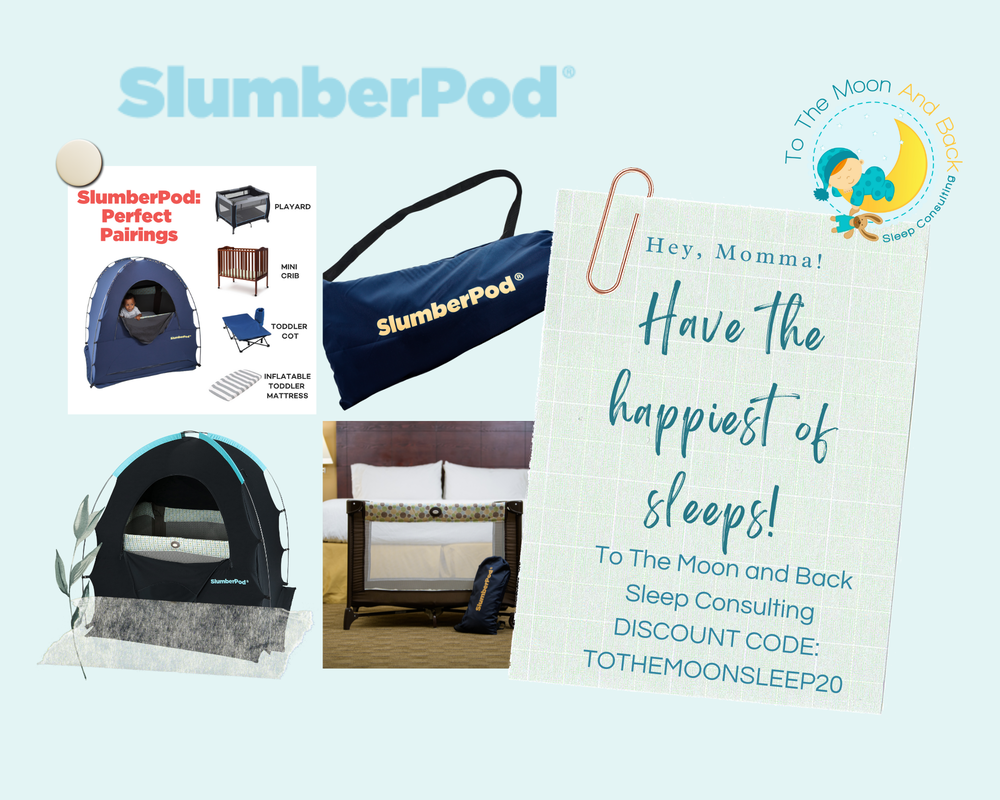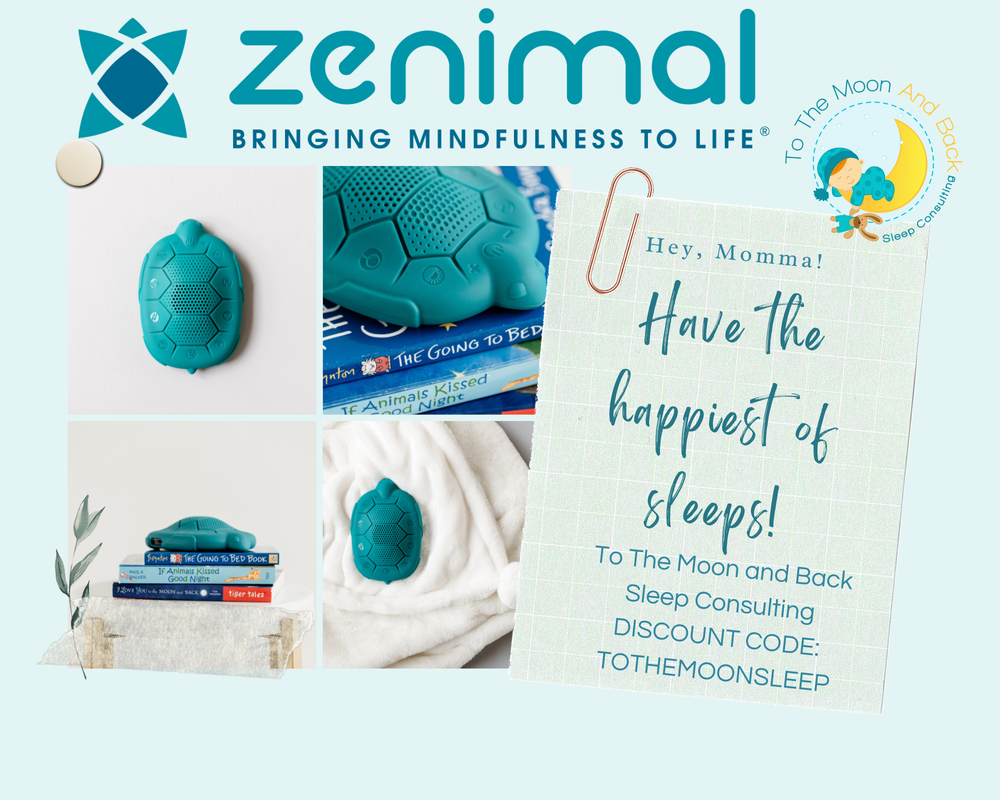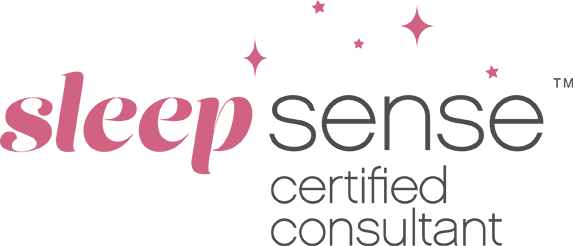|
Is your little one waking up in the middle of the night? No, no, not like that. I mean, like really waking up. Waking up and staying up. For, like… hours. If you’re the parent of a baby or toddler who’s dealing with segmented sleep, you know exactly what I’m talking about. This isn’t the middle of the night. “Go in and comfort your little sleeper for ten minutes until he gets back to sleep” wake up. This is a full-blown 3:00 a.m. dance party. It’s got a few names. Segmented sleep, bifurcated sleep, split nights, and it describes a situation where your little one sleeps for a long stretch, then wakes up happy and energetic in the middle of the night and stays that way for an hour or more. Slit Nights aren’t a new or unnatural phenomenon. Back before the widespread use of the electric light bulb, people would regularly sleep for a few hours, wake up for another hour or two, then go back to sleep. They’d use the time to read, smoke, pray, and have sex (not necessarily all at once), and then after an hour or two, they’d get back into bed and sleep until morning. (Apparently, it was also a typical time for visiting one’s neighbours. Not to hate on the old days, but if my neighbours came over unannounced at three in the morning, oooohhh, things would get biblical.) Nowadays, however, the vast majority of us go to sleep at night and, hopefully, close our eyes and sleep straight through until morning. But let me guess… your kiddo didn’t get the memo? Split nights are actually a pretty common issue. Baby goes down at 7:30 at night, wakes up at 3:00 in the morning, parties her ass off for an hour and a half, then goes back to sleep, apparently careless about the groggy, miserable day she’s set her parents up for. So let’s take a quick look at why this happens, and then we’ll learn how to solve the problem. Why Do Split Nights Happen? There are two major drivers when it comes to sleep. First, there’s our circadian rhythm, which is our natural tendency to fall asleep when it’s dark and wake up when it’s light. Then there’s our homeostatic sleep drive, commonly known as sleep pressure, which builds up over the time we’re awake. So ideally, over the course of the day, sleep pressure builds up, then at bedtime, when the pressure hits the sweet spot, baby puts her head down and goes to sleep. Then, as that sleep pressure begins to subside, circadian rhythm takes over, and baby stays asleep until morning. In the case of a split night, we could be looking at one of two reasons why they’re waking up. ● Your baby or toddler is not getting to bed early enough, OR… ● She is going to bed too early. Now before you pitch your phone out the window at that seemingly paradoxical explanation, check this out. How to Fix Split Nights? If your little sleeper is getting to bed too late, if too much sleep pressure has built up, the brain has this instinctive response that says, “Hey, you’re tired, but you’re not sleeping. I’m guessing that’s because there’s a carnivorous apex predator around, so we’d better get ready to make a break for it,” and then starts upping the cortisol levels. The brain means well, but it’s a little behind the times on our need for lion alerts. So this can make it tough for baby or toddler to get to sleep at bedtime since that cortisol’s got them a little bit jacked. It can also cause a full wake-up at the end of a sleep cycle, which commonly happens around 2 or 3 in the morning. Ugh. If this is the case, you’re one of the lucky ones. Treat this like any other nighttime wake-up, reassure baby that it’s still bedtime, comfort her and let her get back to sleep on her own, and consider moving bedtime up a bit over the course of a few nights. But then there’s the alternate scenario. What if your little sleeper gets to bed too early? In a situation where your baby or toddler’s getting lots of quality daytime sleep and going to bed early, it’s possible that there’s not enough sleep pressure built up to keep him sleeping until his circadian rhythm takes over and helps him sleep through the rest of the night, so up he gets. And now that there isn’t as much sleep pressure, and their circadian rhythm doesn’t have the horsepower to get them to sleep on their own, suddenly they’re up and active for an hour (or three!) while that pressure builds back up. Now, I’m all about early bedtimes. Too little sleep is a much bigger problem than too much. But suppose your baby or toddler's experiencing this kind of split-night sleep. In that case, it’s worth looking at their schedule and doing a little fine-tuning to ensure that you’re hitting the optimum sleep pressure right at the same time that baby’s going to bed for the night. I know plenty of situations can arise where you’ll want to get baby to bed a little early. For example, if she had a day of lousy naps and is clearly tired half an hour before bedtime, it’s the right move to get her to bed ahead of schedule. But try to avoid putting your little sleeper to bed early, more than one or two nights in a row. We want to prevent over-tiredness, but we also don’t want them in the crib at night for more time than they’re actually capable of sleeping. So if your baby or toddler's had a tough day and didn’t nap well, it’s fine to get her to bed a little early since that sleep pressure is likely already built up, but try to get her back onto the regular schedule starting the next morning, including her wake-up time. I know that this can all start to sound like an immaculately choreographed ballet. In some ways, it can be pretty complicated. Still, the more you understand the nuances and know where to make those minor adjustments, the better your baby or toddler will sleep. The less they’ll run into these regressions, setbacks, and interruptions. One final thing to consider if you’re getting ready to tackle this situation. This is not likely to be an overnight fix. Once your little one has gotten into this habit, getting them out of it can take some time. Like any attachment or dependency, overcoming it is an incremental process, and it’s likely to meet with some pushback, so if and when things get tough, remember your goal. You’re giving your little one the skills they need to sleep soundly through the night, and that contributes to their well-being in so many different ways. So stay consistent, be patient, and before too long, you and your little sleeper will both be enjoying full nights of deep, restful sleep. If you are having trouble with your child's schedule and are unsure what it should look like get our Free Sleep Needs Chart. It will help you determine wake windows, nap lengths, number of naps, bedtimes, along with wait times for night time interventions. AuthorErin Neri - Certified Pediatric Sleep Consultant and Owner of To The Moon and Back Sleep Consulting since 2016. I get this question from moms all the time, so I thought I'd touch on it here. “My 10-month-old goes to bed with a bottle and wakes for a bottle in the night. How do I break her of this habit?” Good question! When you put your baby in bed at night, including the bottle in her routine is fine. You could start with a bath, pyjamas, her bottle, and a story or two. You really want to avoid giving her the bottle until she falls asleep or putting her in her crib with the bottle. You do not want your baby to fall asleep with a bottle in her mouth because if she wakes up in the middle of the night, she thinks she needs that bottle again to sleep. If you come with her bottle and feed her to sleep or put it into the crib, she sucks herself back to sleep with the bottle. Not only is that hard for her sleep strategies, but it is also very damaging to her teeth, which are coming in, so start the bottle earlier in your routine. You can have a bath, then her bottle, brush her teeth and then come back for some stories, but you should be putting her into the crib awake and without a bottle. If you follow gentle sleep training guidelines, I will give you some strategies to deal with the two weeks it will probably take to get her on track, learning a new strategy for getting herself to sleep. You don’t have to leave the room; you can stay with her if you like, but she really does need to start connecting the steps that are involved in putting herself to sleep independently so that she is not relying on that bottle! Otherwise, she will most likely keep waking for that bottle. It could go on well into the second year, so you really want to make sure you break this habit now. Then, when she wakes in the night requesting a bottle, you’ll have to decline that request. You can go in, you can stay with her and “ride it out,” basically, but she will learn a new way to sleep, and she will start sleeping a solid night, which will be better for her. It will be better for her in the sense that she is not falling asleep with the bottle in her mouth and, so, it may take about two weeks, but it is definitely for the best. If you are having trouble dropping your little sleepers nightly bottle habit and you want a tailored plan and support to help you teach them independent sleep skills and strategies book your Free 20-Minute Sleep Evaluation Call to learn more about how I can help change your life into one where everyone gets the sleep they need. AuthorErin Neri - Certified Pediatric Sleep Consultant and Owner of To The Moon and Back Sleep Consulting since 2016.  Once your baby reaches six months old, nighttime feedings often become less about nutritional necessity and more about comfort and habit. This is an ideal time to begin transitioning your baby’s calorie intake from night to day. Understanding the biology of how a baby’s body regulates calorie needs can help make this transition smoother and ensure that your baby continues to thrive. The Role of Caloric Intake in Baby’s Growth Biological Basis of Caloric Regulation Babies are excellent at self-regulating their calorie intake. Research shows that, much like adults, if they consume fewer calories at one point in the day, they tend to compensate by eating more at another time to meet their energy requirements. This innate ability is crucial as it helps maintain their growth and development trajectory. Caloric Needs and Development As infants grow, their energy needs per pound of body weight decrease, but the total amount of calories they need increases as they get larger and more active. By the time a baby is six months old, they are typically ready to start solid foods, which helps them meet their increasing nutritional demands. Transitioning Nighttime Calories to Daytime Step 1: Calories Missed at Night equal Calories Made Up During the Day When we begin to sleep train, it is often recommended that we reduce or eliminate all nighttime feedings. This will help ensure that the baby is not confused by the new expectations in the night and learns to sleep through without consuming calories. Eliminating nighttime feeds often concerns parents, but the reality is that the baby’s body will demand this calorie deficit to be made up the next day. Usually through more oz in a bottle, a more extended nursing session or more solid food at each meal. It’s not about pulling nighttime feed but more about reorganizing calorie intake. Step 2: Increase Daytime Feeding Opportunities Offer more frequent daily feedings to compensate for the reduced calorie intake at night. This can include more opportunities to breastfeed or bottle-feed and introducing nutrient-dense solid foods if your baby is ready for them. Step 3: Observe and Adapt Monitor your baby’s response to these changes. Look for signs of hunger and fullness, and be flexible in your feeding schedule. Babies may need time to adjust their hunger cues, so pay close attention to their needs. Step 4: Establish a Consistent Routine As your baby begins to adapt, establish a consistent daytime feeding routine. This helps set their internal clock to expect nourishment during the day rather than at night, aiding in better sleep patterns for both babies and parents. The Science Behind Calorie Shifting The concept of shifting calorie intake is backed by understanding that a baby’s metabolic rate is adaptable. During the first year of life, an infant’s metabolic rate is highly responsive. This adaptability ensures they can meet their energy needs through varying feeding patterns. As nighttime calories decrease, their body adjusts to absorb and utilize more nutrients during the day. This is why consistent daytime feeding becomes crucial in maintaining adequate growth and nutritional status. Ensuring Adequate Nutrition As you work on transitioning your baby’s feeding schedule, it’s essential to ensure they receive a balanced intake of nutrients. If you’re introducing solids, include a variety of foods to cover the nutritional spectrum, such as iron-rich foods, which are important at this stage of development. Conclusion Transitioning your baby from night to day feedings is not just about reducing nighttime interruptions — it’s about aligning their eating patterns with their natural developmental changes. By understanding the biological science behind calorie regulation and providing appropriate nutrition during the day, you can help facilitate this transition smoothly, ensuring your baby continues to receive the energy they need to grow healthy and strong. References:
AuthorErin Neri - Certified Pediatric Sleep Consultant and Owner of To The Moon and Back Sleep Consulting since 2016. Before I get rolling here, let me say that I am not anti-pacifier. I mean, what mother could be? We’ve all been saved from a major baby meltdown by the quick introduction of a dummy into a baby’s mouth at the right moment. Maybe they missed their sleep window by a little bit and were getting a bit cranky; perhaps they got an unexpected bump on the head, or you had to swoop in and take the dog treat out of their mouth. Just before they go into a tantrum, in goes the pacifier, and like magic, all is well. Pacifiers have benefits beyond preventing tantrums, as well. The AAP found that pacifiers can reduce the risk of SIDS, possibly due to the fact that baby has a more challenging time burying their face into soft bedding if they have a pacifier sticking out of their mouth. So, given that very substantial and necessary consideration, I’m making the following recommendations based on the supposition that your baby is over a year old. That doesn’t mean this is irrelevant if your little one’s younger than that, but just make sure you’ve carefully considered the pros and cons of taking away the pacifier before you make a decision. So here’s the conundrum from a sleep expert’s point of view: pacifiers can become a problem when it comes to sleep. If a baby’s accustomed to falling asleep with a pacifier in, it almost always wakes up in the night after it’s fallen out. It kicks up a fuss until mom gets up, finds it, and pops it back in its mouth. So, first off, let’s look at why babies can’t just fall asleep with a pacifier in and then peacefully sleep through the night. Then, we can look at some strategies for getting rid of the pacifier if you and your baby are ready to take the plunge. Sleep, for babies and adults alike, comes in cycles. Many of us are under the assumption that we fall asleep at the start of the night, go into a deeper sleep as the night goes on, and then gradually come out of it as the morning rolls around. It’s true that we go from light sleep to deep sleep and then back again, but it happens several times a night, depending on how long you sleep. For adults, a full cycle typically takes between 90 and 120 minutes. For a baby, it’s closer to 50. Suppose your baby won’t sleep at bedtime without a pacifier in their mouth. In that case, there’s a distinct possibility that they rely on that pacifier to sleep. When they get to the end of a sleep cycle, they get into that very light stage of sleep and might actually wake up, at which point they’re still tired, but they might have trouble getting back to sleep because “Hey! Where’s the pacifier? I can’t get to sleep without my pacifier!” Suppose they can’t find it or haven’t figured out how to put it in on their own yet. In that case, they’re going to get upset because they can’t get back to sleep, and they’re going to start crying for someone to come and rectify the situation. And that, right there, is the definition of what we in the sleep consulting field call a “sleep prop.” Sometimes, it’s feeding, sometimes it’s rocking, and sometimes it’s some crazy combination of a bunch of things, but essentially, it’s something that babies depend on to get to sleep that they can’t provide on their own when they wake up in the night. More than anything, that’s the secret to sleeping through the night. Getting rid of sleep props is, hands down, the most critical component to getting your little one sleeping peacefully from the time you put them to bed until they wake up, happy and refreshed, in the morning. So, if you’re reading this and thinking, “That’s IT! That’s exactly what’s happening with my baby!” you’ll probably want to take steps to get rid of that pacifier. I have a few tips to get you through the process quickly and peacefully. When it comes to breaking bad habits, I’m a cold turkey advocate, and this situation is no different. Toddlers do better with absolutes than with moderation, so my advice to parents is almost always to pick a day to make the change, explain it to your little one, and then toss all the pacifiers into the trash. Toddlers can often adjust to new situations remarkably easily so long as things are clear and consistent. So don’t save one for emergencies or just-in-case scenarios. It will be too easy for you to fall back on the pacifier to get a quick solution if your baby is having trouble sleeping. Then you’ll just be causing confusion. Alright, you’ve made the decision, explained the situation to your toddler, and signed a mental contract with yourself that you’re not going to do it by half measures. You’re ready to go all in. What’s next? Now’s the time to flex those creative muscles and devise a plan. How are you going to spin this change in a positive way? Toddlers typically embrace the idea of growing into “big kids,” so marking it as a milestone can be a big help. Make sure to present the change as a very exciting and joyous occasion. This is a bit of a dirty parenting trick. Still, you could round this off by introducing a “Pacifier Fairy,’ by telling your toddler that the Pacifier Fairy is coming to collect all of their dummies and, in exchange, will leave them a special surprise. Whether that’s something your little one will embrace, I leave it up to your discretion.  One quick side note here: I’ve seen a lot of situations where parents with a toddler and a newborn or younger sibling in the house will give the older baby’s pacifiers to the younger one. On its face, this seems like a good idea, but it can breed some resentment from your toddler when they see their younger sibling sucking on their pacifier. If you can, get rid of your toddler’s pacifiers and get different ones for the younger child. So, you’ve laid the groundwork, your little one has grasped what’s going on, and the house is now pacifier-free. Now, you’ll want to brace yourself because, in about 99% of all cases, your toddler will go a little bit bananas while they adjust to the new reality. It’s nothing to be concerned about; we all get a little irritable when we break a habit, but I want you to know that it’s rarely a seamless transition. There’s going to be some pushback. When that pushback hits, and your toddler starts to lose it a little, my advice is to distract, distract, distract. Keep some of their favourite treats on standby, have the iPad cartoons ready, and quickly turn their attention to something else when they start to fuss about the lack of a pacifier. You can acknowledge their frustration and offer them as much comfort and support as needed but don’t apologize or give in. Remember that you’re the authority figure here. If you’ve decided that the pacifier is a thing of the past, that’s the way it is. Giving them a pacifier at this stage is only going to reinforce the idea that crying or fussing is an effective tool for getting their way. Every toddler is obviously a unique individual, so use these guidelines in conjunction with your intuition. Within a few nights, maybe a week, your little one should be Binky-free, and your whole family should enjoy the benefits of those glorious, sleep-filled nights. AuthorErin Neri - Certified Pediatric Sleep Consultant and Owner of To The Moon and Back Sleep Consulting since 2016. Daylight savings starts each spring season and this year is shows up on Sunday, March 10, 2024.
When it's time to “spring forward” the clocks it can be a dreaded time for parents of young children because with this, comes an adjustment that does not happen immediately. This is because children tend to be more structured in their bedtime and wake up around the same time each morning and that is why people usually can see a greater effect on children when the time changes. However, there are some things you can do to help make the transition to the new time go a little smoother. My recommendation is to leave your clock alone Saturday night. Wake up Sunday morning, have breakfast, then go around your house and change your clocks. Psychologically, it will feel much better for everyone if you wait until Sunday morning to change the time. My best advice for children to help them with the change is to split the difference with the old time and the new time. How does that work? Hands up if this sounds familiar!!
Your fussy baby finally falls asleep for her afternoon nap and you sit down for a much needed moment to yourself only to hear a car with a broken muffler roaring down the street. Just like that, Sleeping Beauty is wide awake and mad; NOT a good combination. Or maybe you live in the country and you’re awoken at dawn by a wailing infant who has adorable (but ridiculously loud) birds chirping outside her window. Environmental noises are a fact of life that you can’t do much about! But there IS something you can do about your baby’s ability to sleep through the noise. In my experience, white noise machines can be a lifesaver when it comes to helping babies fall asleep and stay asleep. Why and which one do I recommend? .... Discover effective strategies to ensure your kids maintain healthy sleep habits during a move, and learn how to help them during this transitional period. Moving to a new home in Alberta can be an exciting yet stressful time for families, especially when kids are involved. Amidst the chaos of packing, unpacking, and adjusting to a new environment, it's crucial not to overlook the significance of maintaining healthy sleep habits during the move. Sleep is pivotal in children's growth, development, and overall well-being. This article will explore practical ways to support your kids in getting the restful sleep they need while navigating the transition.
Establish a Familiar Sleep Environment and a Calming Bedtime Atmosphere When moving to a new place, children can feel disoriented and uneasy due to the change in surroundings. To mitigate this, create a sleep environment that mirrors their previous setup. Set up their bed, blankets, and favorite stuffed animals in a similar arrangement. Familiarity in their sleeping space can provide a sense of comfort and security, promoting better sleep during the move. Set the stage for a peaceful sleep environment. Consider using soft lighting, soothing colors, and calming scents in their bedroom. Creating a serene atmosphere can aid relaxation and help them unwind before bedtime. A Consistent Bedtime Routine as You Adjust to the New Time Zone Routines offer predictability, which is especially crucial when everything else feels uncertain. Stick to their usual bedtime routine as closely as possible. Whether reading a story, dimming the lights, or practicing relaxation techniques, these activities signal to their bodies that it's time to wind down and prepare for sleep. Consistency in routine can help mitigate the disruptions caused by the move. If the move involves crossing different time zones, gradual adjustment can help prevent jet lag and ensure smoother sleep transitions. Gradually shift their bedtime and wake-up time in the days leading up to the move so the change isn't abrupt and disruptive. Prioritize Physical Activity Engaging in physical activities during the day can help expend excess energy, making it easier for kids to fall asleep at night. Allocate time for outdoor play or indoor games that encourage movement. Physical exertion contributes to a healthier sleep cycle and reduces any stress or anxiety associated with the move. By incorporating active play into their daily routine, you can promote a more balanced emotional state, allowing them to approach bedtime with a calmer and more relaxed mindset. Additionally, physical exertion can enhance the quality of their sleep by promoting deeper restorative sleep cycles. This means that even amid the changes and uncertainties of moving, their bodies have the opportunity to recover and recharge through the night, supporting their overall health during this transitional period. Open Communication Children may have questions or concerns about the move that could affect their sleep. Encourage open communication and create an environment where they feel comfortable sharing their thoughts. Addressing their worries and providing reassurance can alleviate any bedtime anxiety they might be experiencing. Involving them in the moving process, such as allowing them to pack a special box of their belongings or choose the color of their new room, can give them a sense of control and involvement. This empowerment can boost their confidence and reduce feelings of uncertainty, contributing positively to their overall sleep quality. If you have hired movers for your long distance move in Alberta, Canada, long distance movers can make it easy on the kids too. They can suggest safe ways for kids to get involved, which can help calm their anxieties. Remember, their emotional well-being and sleep patterns are closely intertwined, making it crucial to tend to their feelings during this significant life transition. Unpack Comfort Items First During the moving process, certain items may take longer to unpack than others. However, they prioritize unpacking comfort items like their favorite pajamas, blankets, and bedtime books. Having these items readily available can offer a sense of normalcy and help them feel more at ease in their new surroundings. Remember that small gestures can make a big difference. Before their first night in the new home, consider engaging in a soothing bedtime routine together. Reading a beloved storybook, sharing a quiet conversation, or practicing deep breathing exercises can help them relax and ease into sleep. These moments of connection can be reassuring during a time when everything else seems uncertain. Limit Screen Time Before Bed Screens emit blue light that can interfere with the production of melatonin, the hormone responsible for regulating sleep. Especially during the move, when sleep might already be disrupted, limiting screen time in the hour leading up to bedtime is essential. Encourage quieter activities like reading or drawing instead. Be Patient and Understanding It's normal for sleep disruptions to occur during a move. Children might take some time to acclimate to the new environment and routines. Patience and understanding are key during this period of adjustment. Recognize that occasional sleep challenges are part of the process and focus on consistently reinforcing those healthy sleep habits during the move. Each child is unique, and their reactions to the move can vary. Some may adapt quickly, while others might require more time to feel comfortable in their new surroundings. As a parent, being attuned to your child's emotions and behaviors can guide you in providing the necessary support. Remember that maintaining healthy sleep habits during the move is not just about the immediate adjustment period but about setting the stage for their ongoing well-being. By approaching sleep disruptions with a proactive and patient attitude, you can help your children build resilience and adaptability, skills that will serve them well beyond the move. So, as you navigate this transition, remember that while challenges may arise, your dedication to their sleep routine is a valuable investment in their overall health and happiness. Seek Routine Amidst Change Change can be unsettling for children, but establishing a routine can provide a sense of stability. Even amidst the move, incorporating elements of their regular routine can help anchor them and promote better sleep. These familiar practices can make a significant difference, whether it's a special pre-sleep ritual or a favorite lullaby. Help Kids Maintain Healthy Sleep Habits During the Move Moving to a new home with kids requires careful consideration of their sleep needs. While the transition can be demanding, prioritizing healthy sleep habits during the move is essential for their well-being. By creating a consistent sleep environment, maintaining routines, and fostering open communication, you can help your children navigate the move while ensuring they continue to get the restful sleep they need. Remember, patience and understanding go a long way in making this transitional period smoother for the entire family. Photo via Pexels Tell me if this scenario sounds familiar…
Your baby wakes up in the morning after a solid night’s sleep. You feed her, change her, play with her for a little bit, take her for a little walk outside, then rock her to sleep and put her gently into her crib for her morning nap. And then, 30 minutes later, she wakes up fussy and irritable and, despite your pleading, bargaining, and offers of riches, refuses to go back to sleep. So, after half an hour of trying to put her back down, you finally give in, hoping she’ll be that much more tired when her afternoon nap rolls around, only to have the exact same scenario play out again, and baby is a cranky ball of unhappiness for the rest of the day. Sleep, like food, is one of those elements where baby has the final say on whether or not they’re going to cooperate, so there’s no sense trying to force the issue. If they’re not sleeping, just leaving them in their room usually won’t fix things. So, here’s what’s going on, and how to fix it. It's time to “fall back” the clocks!!
This can be a dreaded time for parents of young children because with this, comes an adjustment that does not happen immediately. This is because children tend to be more structured in their bedtime and wake up around the same time each morning and that is why people usually can see a greater effect on children when the time changes. However there are some things you can do to help make the transition to the new time go a little smoother. My recommendation is to leave your clocks alone Saturday night. Wake up Sunday morning, have breakfast, then go around your house and change your clocks. Psychologically, it will feel much better for everyone if you wait until Sunday morning to change the time. My best advice for children to help them with the change is to split the difference with the old time and the new time. How does that work? .... |
To The Moon and Back Sleep ConsultingProviding families the tools & support they need to get their little ones sleeping through the night and napping like champs! Everyone has more fun when they are well rested! Visit Wollino - Discount Code: TOTHEMOONANDBACK10
Browse
All
|
All information provided on this website, including texts, images, and other materials, are for informational purposes only and should not be considered a replacement for assessment or treatment by a healthcare provider.
© COPYRIGHT 2016-2024 TO THE MOON AND BACK SLEEP CONSULTING. ALL RIGHTS RESERVED. WAKING GIRL WEB DESIGN
© COPYRIGHT 2016-2024 TO THE MOON AND BACK SLEEP CONSULTING. ALL RIGHTS RESERVED. WAKING GIRL WEB DESIGN
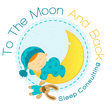



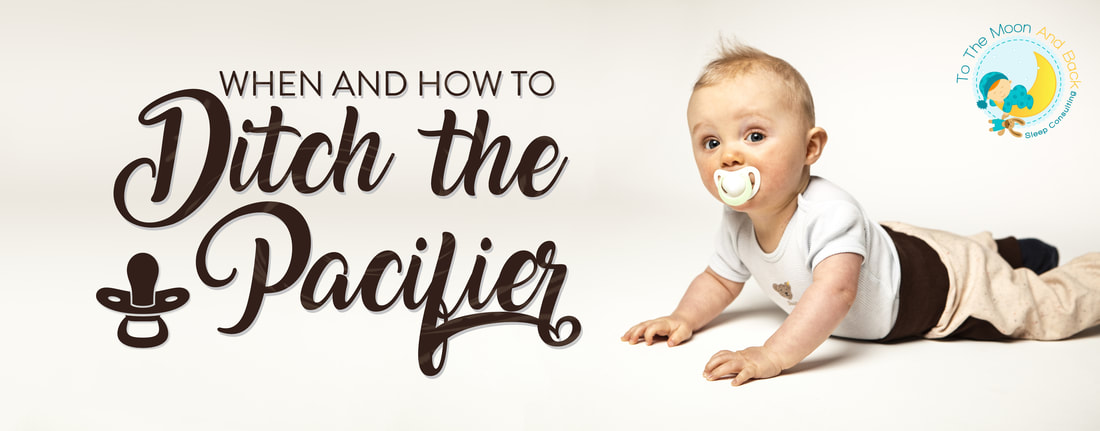


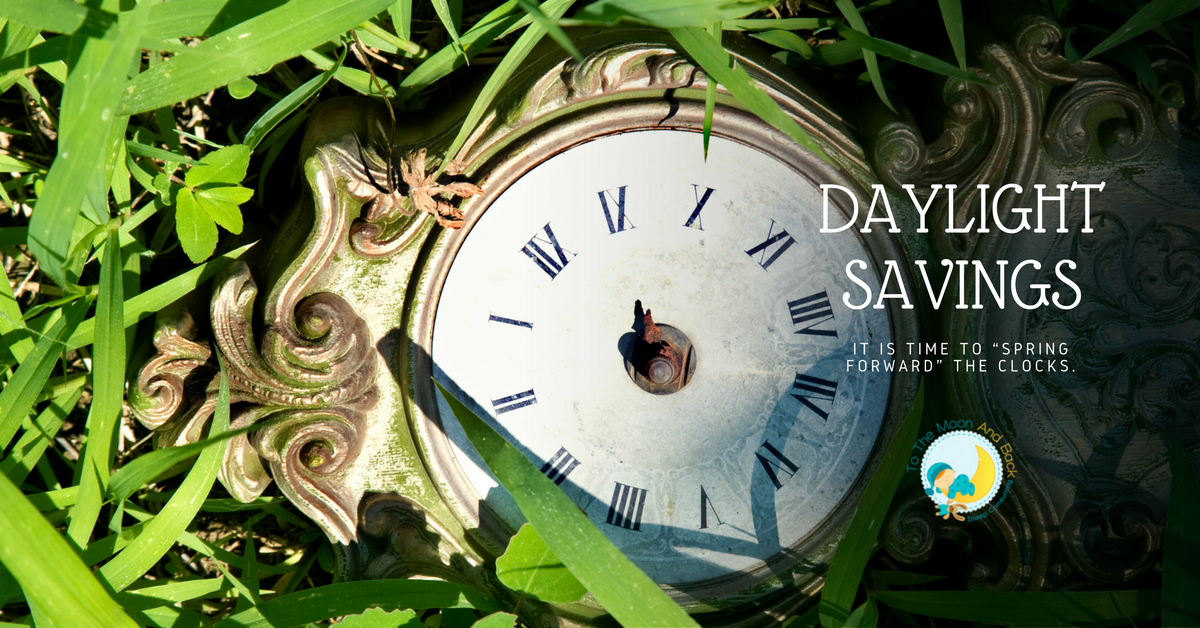
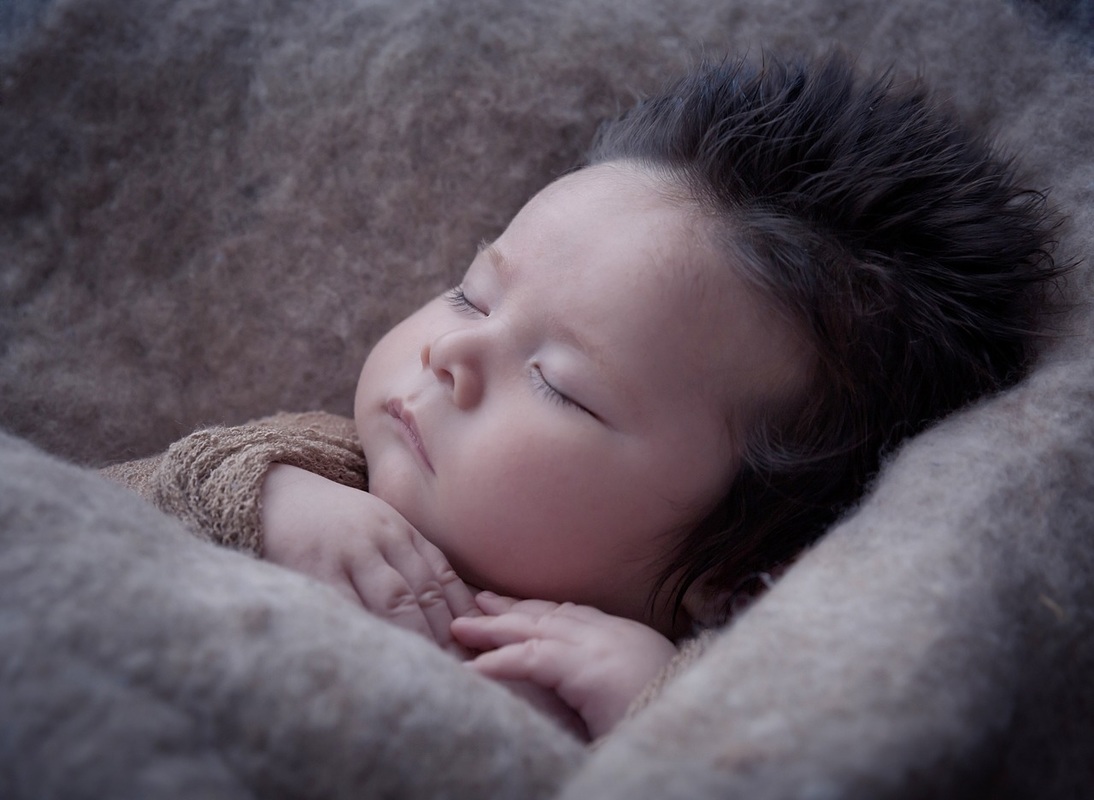


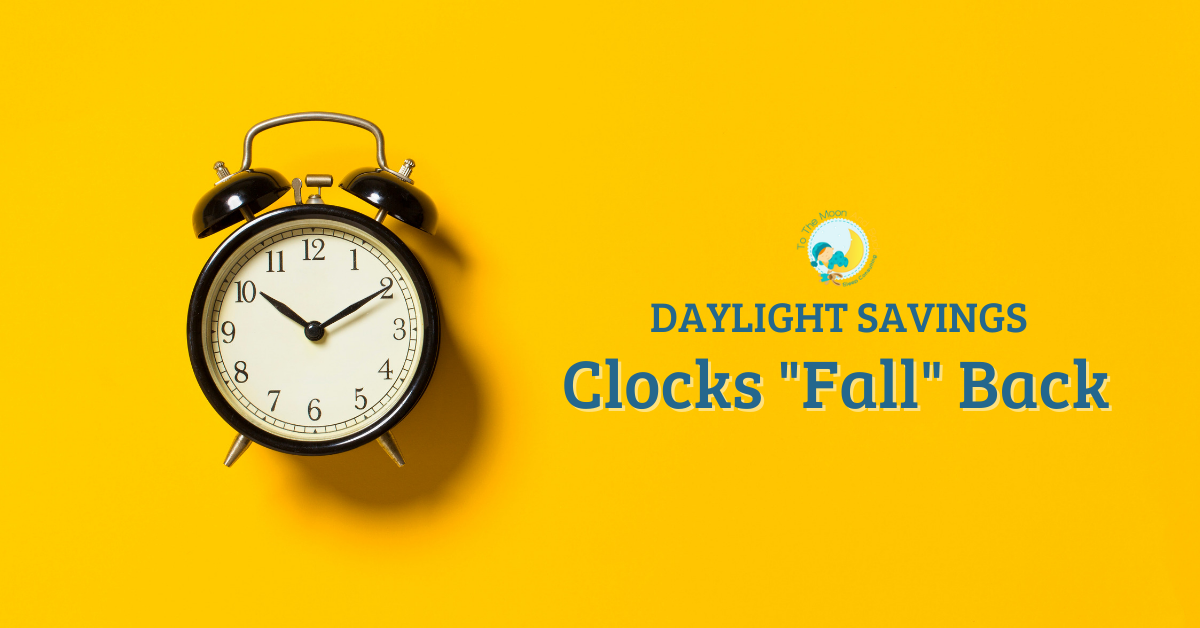

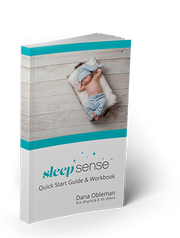



 RSS Feed
RSS Feed
